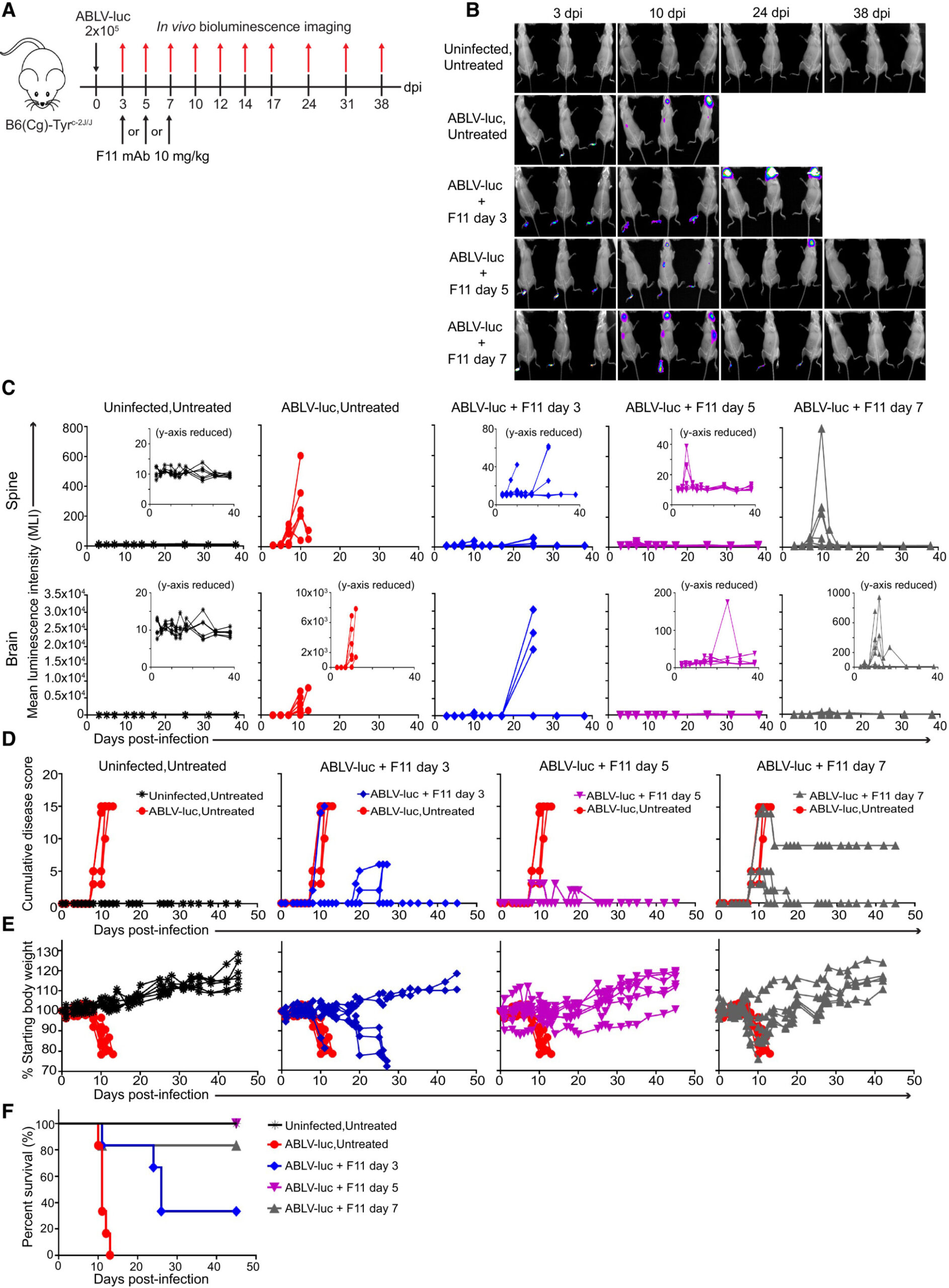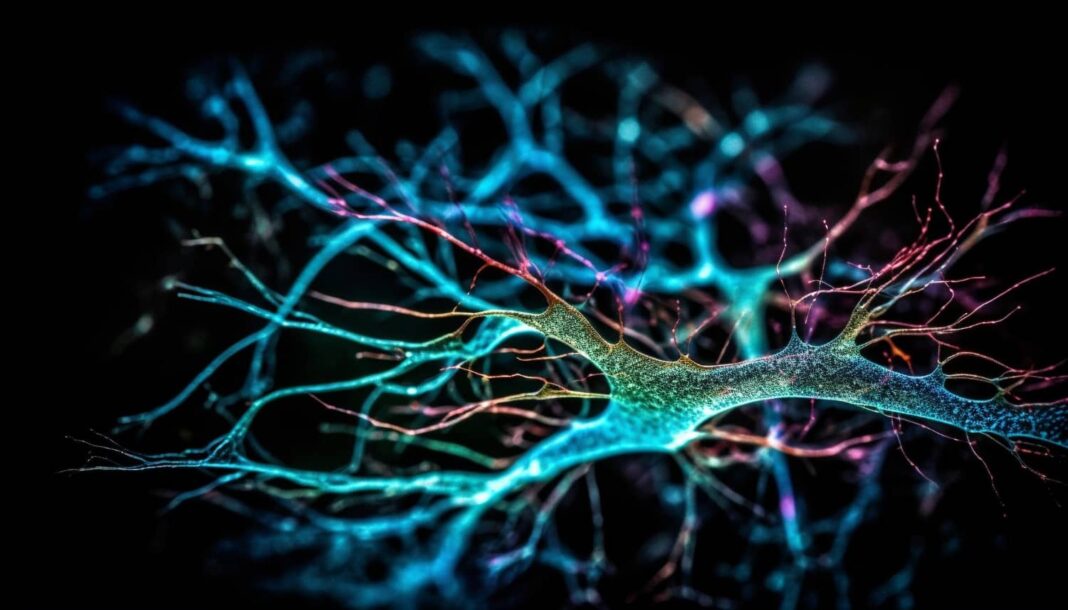Rabies, a deadly viral disease, has long been a threat to human lives, especially in regions like Africa and Asia, where it claims nearly 60,000 lives annually. Until now, there has been no reliable treatment for symptomatic rabies once the virus invades the central nervous system (CNS). However, recent research has uncovered a potential game-changer in the fight against this relentless killer: the monoclonal antibody F11.
F11 Therapy: A Beacon of Hope
The rabies virus becomes fatal once it reaches the central nervous system, causing severe symptoms. Conventional immunotherapies have primarily focused on preventing CNS infection during the early, pre-symptomatic stages of the disease. However, the groundbreaking study we’re discussing here evaluates the therapeutic potential of F11, a human monoclonal antibody, in treating established lyssavirus infections.

Mice were infected with 2 × 105 FFU of ABLV-luc on day 0 and mAb F11 (10 mg/kg) was administered on day 3, 5, or 7 (n = 6 mice/group).
Bioluminescence imaging of mice on days 3, 10, 24, and 38 post-infection. See Fig EV1D for the full series.
Viral burden was quantified as mean luminescence intensity in the spines (top row) and brains (bottom row) of mice. Insets are the same data with a reduced y-axis scale, to show detail.
Cumulative disease scores were determined by clinical presentation following the ABLV-luc challenge.
Percent starting body weight as an indicator of disease.
Kaplan–Meier survival plot. ABLV-luc Untreated vs. ABLV-luc F11 day 3, P = NS; ABLV-luc Untreated vs. ABLV-luc F11 day 5, P = 0.0003; ABLV-luc Untreated vs. ABLV-luc F11 day 7, P = 0.0036. Log-rank test with Tukey–Kramer correction for multiple comparisons.
Promising Results
The research findings are nothing short of remarkable:
- Effective Viral Load Reduction: A single dose of F11 has been shown to limit viral load in the brain and even reverse disease symptoms, even when administered after the virus has initiated robust replication in the CNS.
- Key Role of CD4 T Cells: While F11-dependent neutralization is essential, it’s not the sole factor in protecting animals from mortality. The study highlights the critical role of CD4 T cells in successfully controlling the infection.
- Immune Cell Dynamics: F11 significantly alters the spectrum of leukocyte populations in the brain, and the interaction between F11 and Fc receptors contributes to its therapeutic efficacy.
- Functional Cure: The research offers hope by demonstrating that a single-dose monoclonal antibody therapy can provide a functional cure for rabies, even when CNS replication is well underway. The virus may persist at low levels in the brain, but animals remain free of disease signs.
Implications for Rabies Treatment
Rabies, though rare in industrialized countries, continues to pose a significant threat in the developing world, especially among young individuals. The World Health Organization has set a goal of eradicating rabies by 2030, but progress has been slow. Therefore, there is an urgent need for cost-effective and easily administrable therapies.
The discovery that peripherally administered monoclonal antibody therapy, like F11, can promote survival and reverse disease signs in lyssavirus-infected animals offers a glimmer of hope. This breakthrough suggests that a similar therapy for humans could be developed, meeting the criteria for effective rabies treatment in resource-constrained healthcare facilities.
As research continues to progress, F11 stands as a beacon of hope in the quest to combat rabies, potentially saving countless lives in the years to come.
- Is rabies 100% treatable? Unfortunately, rabies is not 100% treatable. Once symptoms appear and the virus reaches the central nervous system, it becomes nearly impossible to cure. Early intervention is crucial.
- Can humans be cured of rabies? While it’s extremely rare, there have been a few cases of humans surviving rabies. However, this typically occurs when treatment is administered before the onset of symptoms, emphasizing the importance of immediate medical attention.
- What is the current treatment for rabies in humans? The current treatment for rabies in humans involves a series of rabies vaccinations and rabies immune globulin (RIG) injections soon after exposure to the virus. Once symptoms appear, treatment becomes less effective, making prevention through vaccination critical.
- Is 7 days too late for rabies vaccine after a possible bite exposure? Ideally, rabies vaccination should be administered as soon as possible after a potential rabies exposure. While 7 days is not ideal, it’s still advisable to receive the vaccine, as it may provide some level of protection, even if symptoms have not yet appeared. However, immediate vaccination is always recommended for the best chance of preventing rabies.











